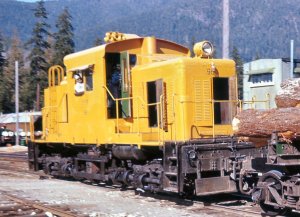SunsetLimited
Enjoy the Journey
But when you're a realist who very nearly failed science like I am, you open the box and say, "Oh, the cat's dead because we didn't feed it after we put it in this box."



Bonzer! Those little wagons would make great models. Thanks for sharing that, Mitch.






Mitch , Wrong type of loco , nice though .. however when I posted about Critters the intent was to focus on those odd ball locos / http://www.northeast.railfan.net/industrial.html which were built between 1930 - present .The Queensland Rail Clyde/GM GL18-C or 1720 Class is one of my all-time favourite locos. 56 of these little guys were built in Brisbane to a gauge of 1067mm (3ft 6in) in 1966, making the class 50 years old and still fully operational. They're only 13.4 metres (44 feet) long and weigh just 61.5 tonnes. They are geared for a maximum speed of 100km/h (60mph), ride on Co-Co bogies, and produce 1000 horsepower. The offset box in front of the cab didn't feature in original designs but was later added to house an air conditioning unit. 1720's frequently operate in parts of Queensland where temperatures often exceed 40C (104F).
1720s are extremely versatile, and their duties have included anything from branchline goods to suburban and long-distance passengers, tourist trains, intermodal, grain, livestock, ballast, bulk sugar, molasses, petrochemicals, shunting and more. They were also a popular on the Great South Pacific Express - a former ultra luxurious service built by QR and jointly owned by QR and Orient-Express.
In 2010, QR was split into two separate companies - the state-funded QR (suburban and long-distance passenger), and the privately owned Aurizon (freight). Aurizon inherited the entire 1720 fleet, but permitted QR to continue using them. Aurizon also sold 20 members of the class to South Africa where they have been overhauled and sold on to various African railways. Queensland Rail has recently purchased several 1720s back from Aurizon.


(Left) Two 1720s in 'Bronco' livery on the Westlander. Although 1720 classes are common on long distance trains, it's rare that they lead.
(Right) Two 1720s pull an empty cattle train on the lonely Quilpie branch about 1000km inland from the coast. 1726 has a bent frame as a result of two separate level crossing accidents.
--------------------------------------------------------------------------------------------------------------------------------------------------


(Left) 1764 leads a mixed goods from Dirranbandi to Toowoomba (I'd like to see some of you try and pronounce those names!!)
(Right) Two 1720s wearing the original blue livery on the rural Kingaroy branch at Kilkivan, the town where my mum grew up.
--------------------------------------------------------------------------------------------------------------------------------------------------


(Left) A 'Buda-Dji' livered 1771D in Cairns in Far North Queensland for use on the Kuranda Scenic Railway (KSR) services. Buda-Dji was a giant carpet snake from the mythical Aboriginal Dreamtime. He was said to have carved the impressive Barron Gorge whilst carrying beautiful shells on many trips between the Great Barrier Reef and Atherton Tablelands. As the story goes, he was ambushed by Bird-Men who stole his shells and killed him with a stone axe.
(Right) 1720's on the famous KSR. The 1720's size makes it perfect for this type of work due to the sharp curves, steep grades, dozens of bridges and tight clearances of the Kuranda line. The carriages used on the line are over a century old.
Hope you guys love them as much as I do. Thanks for reading. Please note - I did not take these photos and I take no credit for them.
Mitch
Mitch , Wrong type of loco , nice though .. however when I posted about Critters the intent was to focus on those odd ball locos / http://www.northeast.railfan.net/industrial.html which were built between 1930 - present .
BCK RR
Yes, we are I think you missed this one Southern San Luis Valley RR, homebuilt 30T #D500 .. however no six axle oddities though , your photo's of CLYDE'S /GM GL18-C 1720 Class is way too modern and appears to be in the class of a heavy haul aka a Mainline Diesel in the U.S.A. at least by my standards ... lol Here's another one of my few favorites as well .Oh I thought we were talking about oddities and homemade jobbers


